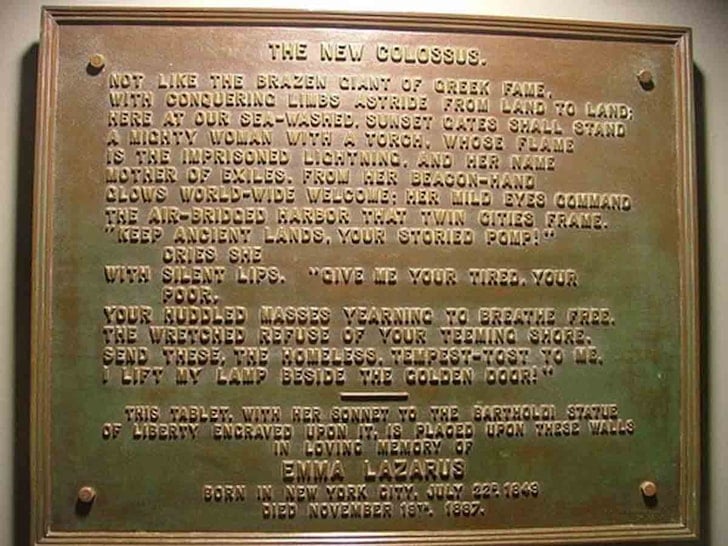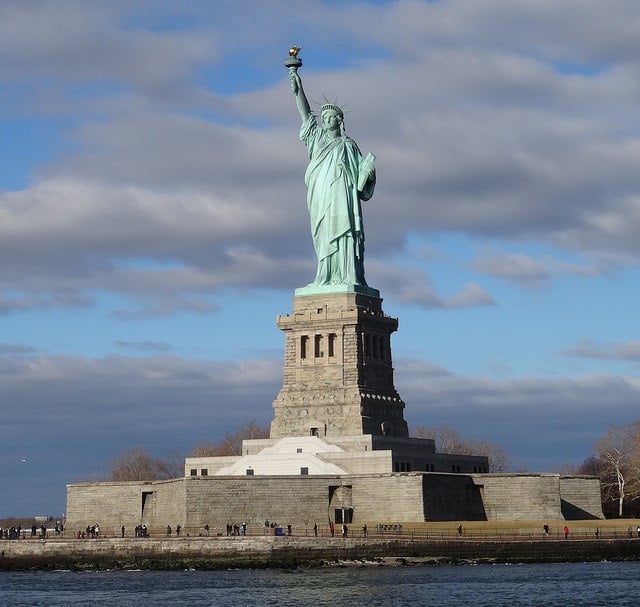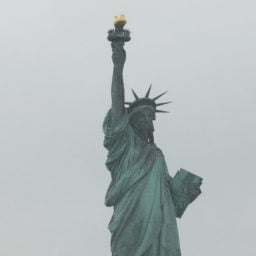A Trump administration official has proposed an update to one of the most famous statues in the world.
In an effort to justify a strict new immigration policy targeting poor families and individuals to help restrict legal immigration, Ken Cuccinelli has offered a less-than-poetic rewrite of the plaque on the Statue of Liberty.
Where Emma Lazarus’s “The New Colossus” offered unconditional welcome, proclaiming, “Give me your tired, your poor/ Your huddled masses yearning to breathe free/ The wretched refuse of your teeming shore,” Cuccinelli, the acting head of Citizenship and Immigration Services, offered a revision when asked by NPR if the lines of the poem were “part of the American ethos.”
“They certainly are—give me your tired and your poor who can stand on their own two feet and who will not become a public charge,” said Cuccinelli, who was on Morning Edition to discuss a new “public charge” rule that would make it more difficult for immigrants who have used public benefits such as Medicaid, food stamps, and Section 8 housing to qualify for a green card. The new regulation is slated to go into effect 60 days from Monday. (It does not appear that Cuccinelli was actually proposing a rewrite to the physical plaque, but his words quickly went viral.)
Lazarus wrote the poem in 1883 to help fundraising efforts to build the Statue of Liberty’s base. Designed by French sculptor Frédéric Auguste Bartholdi, with metal framework engineered by his countryman Gustave Eiffel, the statue was a gift to the US from the people of France, in honor of the country’s centenary.

The plaque at the Statue of Liberty with Emma Lazarus’s poem “The New Colossus.” Photo courtesy of the National Park Service.
The statue was inaugurated in 1886, and the plaque featuring Lazarus’s famous verse was mounted inside the pedestal in 1903. Lady Liberty, with her illuminated torch offering a beacon above immigrants arriving on Ellis Island, quickly became a symbol of the US as a place of refuge for the world’s suffering masses.
“That plaque was put on the Statue of Liberty at almost the same time as the first public charge law was passed—very interesting timing,” Cuccinelli claimed, calling these types of regulations a “140-year-old part of our legal immigration system.” (His history lesson was a bit muddled; he was likely referring to the Immigration Act of 1882, which allowed immigration authorities to turn away immigrants suspected of being a “convict, lunatic, idiot, or any person unable to take care of himself or herself without becoming a public charge.”)
But the new public charge rule, the brainchild of Trump advisor Stephen Miller, would mean that many migrants seeking a better life in the US would no longer qualify for permanent residence, simply because they had used public benefits. A November 2018 report from nonpartisan think tank the Migration Policy Institute found that the rule would probably “disproportionately affect women, children, and the elderly.” The proposal has already drawn its first lawsuit seeking to block it, brought by San Francisco and the county of Santa Clara, California.
At a White House press briefing on Monday, Cuccinelli continued to defend the new rule. But when asked point blank if the plaque should be removed, he admitted that “I’m certainly not prepared to take anything down off the Statue of Liberty.”










